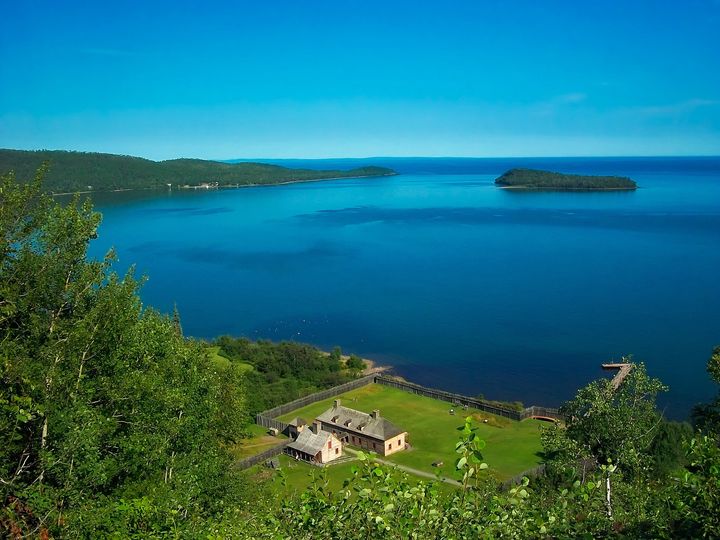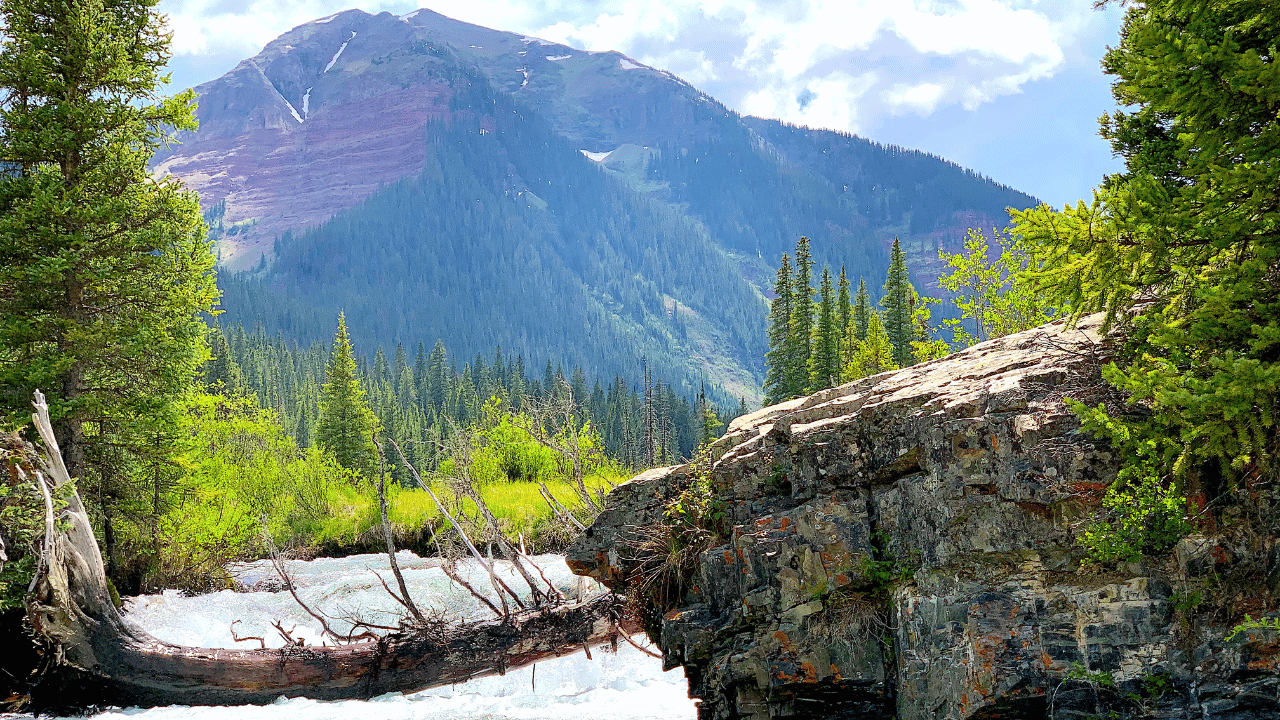National Parks Are National Treasures
Get ready for an adventure - explore the US national parks for hiking trails, views, camping, wildlife and more!

Do you want to get away from it all?
National parks across the United States offer a unique opportunity for exploration and discovery. From breathtaking hiking trails, panoramic views, lakeside camping, wildlife observation and more, there's something special to discover in every park. And with over 417 national parks available throughout the country, there's sure to be an outdoor experience that fits your needs.
Immerse yourself in America’s natural wonders and create lasting memories as you explore history and find adventure in these incredible landscapes. Get inspired by diverse cultures as you venture into old-growth forests or look down upon majestic mountain peaks. Experience what nature has been offering up since before humans arrived!
Come along as we hike through some of these parks or check out the website today to find out more about our playground of protected sites throughout the U.S. for your enjoyment, and plan your trip to visit one of them now.
Get your free downloadable camping checklist here!
U.S. National Parks - A Brief Overview
The National Park System was created in the United States for preservation and protection of the country's natural and cultural resources for future generations. It was established by an act of Congress and signed by the president in 1916 and has since grown to include over 400 different parks, monuments, historic sites, and other locations. They are set aside for your recreation.
National Park Service
The National Park Service is the agency responsible for managing the National Park System. It was also created in 1916 and is under the supervision of the Department of the Interior. The National Park Service is responsible for maintaining the parks and other protected areas and for welcoming visitors. Reservations for national parks can be made through recreation.gov.
National Park Foundation
The National Park Foundation is a nonprofit organization that raises funds and awareness for the National Park System. It was established in 1967 and works to connect people with the parks and encourage their support and stewardship.
National Historic Site
National historic sites are areas designated by the National Park Service to commemorate and preserve significant moments and people in American history. There are over 500 national historic sites across the United States.
National Monument
National monuments are areas set aside for their historic, cultural, or scientific significance. They are generally smaller than national parks and may be created by presidential proclamation rather than by an act of Congress. There are over 100 national monuments in the United States, including the Statue of Liberty and the Grand Staircase-Escalante National Monument in Utah.
Yosemite National Park
Yosemite National Park is located in California, covering an area of 747,956 acres. The park is renowned for its staggering granite cliffs, cascading waterfalls, and breathtaking natural scenery. The park point of entry is via several entrances, including the Arch Rock Entrance and the El Portal Entrance. There is a visitor center at Yosemite Valley, providing a wealth of information on the park's history, geology, and wildlife. The center hosts daily ranger-led walks and talks, an exhibit hall, and a bookstore. Peak season at Yosemite is from May through September when the weather is amenable for hiking, rock climbing, and other outdoor activities.

Activities
Yosemite National Park offers plenty of activities for visitors, such as hiking, horseback riding, fishing, and camping. Rock climbing is a favorite activity for thrill-seekers, with the park being home to the highest concentration of granite cliffs in North America. In addition, the park boasts several popular trails, including the Mist Trail, which leads to Vernal and Nevada Falls.
Attractions
The park features many iconic structures and natural landmarks, such as Yosemite Falls, the tallest waterfall in North America, and Half Dome, the park's most famous granite formation. Other popular attractions include Tunnel View, which offers a panoramic view of Yosemite Valley, and Glacier Point, which provides a stunning view of the surrounding mountains and valleys.
Historical Significance
Yosemite National Park has a rich historical significance. The park was inhabited by Native Americans for at least 3,000 years before the arrival of European settlers. Yosemite played a key role in the development of the National Park Service, as it was one of the first parks to be protected under the Organic Act of 1916. Today, millions of visitors come to Yosemite each year to experience its awe-inspiring natural beauty and learn about its rich history.
Yellowstone National Park
Yellowstone National Park is located in the states of Wyoming, Montana and Idaho and covers an area of 2.2 million acres. It is considered to be the first national park in the world and is known for its geothermal features, such as geysers and hot springs. The park is home to over 300 geysers, including the famous Old Faithful, and over 10,000 thermal features. It is also home to a diverse range of wildlife, including grizzly bears, wolves, elk, and bison.

Visitor Center
There are several visitor centers within the park, providing services such as information, exhibits, and educational programs. Some of the services provided at the visitor centers include ranger-led tours, maps, and brochures. The park is open 365 days a year, and the peak season is from May to September when all facilities and routes are open.
Activities
The park offers a range of activities, from camping and hiking to fishing and wildlife watching. There are over 2000 miles of hiking trails throughout the park, ranging from easy walks to challenging backcountry treks. Visitors can also go fishing in one of the many streams and rivers within the park or take part in wildlife watching tours.
Attractions
Some of the most popular sights and attractions within the park include the Grand Prismatic Spring, Mammoth Hot Springs, and the Grand Canyon of the Yellowstone. These features can be viewed from boardwalks and trails throughout the park.
Historical Significance
Yellowstone National Park has a significant historical meaning as it was the first national park established in 1872. It played a fundamental role in the conservation movement in the US and around the world. Today, the park continues to inspire and connect visitors to the natural world.
Bryce Canyon National Park
Bryce Canyon National Park is located in southern Utah, near the city of Bryce. Located on the Colorado Plateau that covers parts of the Four Corners region, the park is famous for its unique geological formations known as hoodoos, which are tall spires of rock that appear to be made of red, orange, and white stone. The park also features several hiking trails that lead visitors through some of the most spectacular natural scenery in the country.

Visitor Center
Bryce Canyon has a visitor center that provides a variety of services for visitors, including maps, guides, and information about the park's history and geology. There are also several picnic areas and campgrounds located throughout the park.
Peak Season
The peak season at Bryce Canyon is during the summer months, when the weather is warm and dry. However, visitors should be prepared for cool nights and possible thunderstorms, especially in the higher elevations.
Activities
Activities in the park include hiking, camping, wildlife viewing, and stargazing. The park also offers several guided activities, such as ranger-led hikes and evening programs. Other activities include a hike through the Narrows where hikers must walk through the Virgin River because the canyon walls are so close.
Attractions
One of the most popular sights in the park is the Bryce Amphitheater, which is a large natural amphitheater that is home to the park's most famous hoodoos. Other popular attractions include the Queen's Garden, the Rainbow Point Scenic Drive, and the Sunrise Point Overlook. While Landscape Arch is north in Arches National Park, there is a double arch along with other examples of a delicate arch crafted through the years to visit.
Historical Significance
Bryce Canyon also has significant historical significance, as it is considered to be one of the best examples of badlands topography in the world. The area was first settled by Native Americans over 10,000 years ago, and was later inhabited by Mormon pioneers in the 19th century. The park was established in 1928, and has been a popular destination for tourists ever since.
Grand Canyon National Park
The Grand Canyon National Park is located in Arizona, USA. It spans over 1,217,262 acres, and its unique geological features attract millions of visitors every year. The park has a visitor center that provides a range of services, including information on park rules and regulations, maps, and lodging options. There are also guided tours and ranger programs available to visitors.

Peak Season
The peak season at the Grand Canyon National Park is from June to August; however, visitors can enjoy the park year-round. Hiking is the most popular activity in the park, with various trails available for different levels of experience. Visitors can also engage in camping, fishing, and river rafting.
Attractions
The park offers many iconic sights and attractions, including the Grand Canyon itself, which is one of the seven natural wonders of the world. Visitors can also see the Bright Angel Trail, the Colorado River, and the Desert View Watchtower.
Historical Significance
The Grand Canyon National Park has significant historical significance, dating back more than 12,000 years when the first Native Americans inhabited the area. The park also played a crucial role in scientific exploration, with various expeditions to the area dating back to the 1800s.
Hot Springs National Park
Hot Springs National Park is located in Arkansas and is the oldest national park in the National Park System. The park is known for its natural hot springs that visitors can enjoy and is designated as a UNESCO World Heritage Site. As for the visitor center, the national park has a few visitor centers like the Fordyce Bathhouse that offers guided tours, exhibits, and the park's movie.

Peak Season
Peak season for the park is from March through May and September to November. During this time, visitors can enjoy hiking, camping, and picnicking. Some of the popular activities at the park include hiking on its scenic trails, bird watching, horseback riding, and even fishing for trout.
Attractions
Some attractions to see in the park include the Bathhouse Row, which features eight historic bathhouses with different architectural designs and adornments. The Hot Springs Mountain Tower, where visitors can get a bird's eye view of the park, is also a must-see.
Historical Significance
The historical significance of the park dates back to the Native American tribes who believed that the hot springs had healing powers. Later on, in the 1800s, wealthy visitors would flock to the park to enjoy the spa-like services offered by bathhouses. Today, Hot Springs National Park continues to offer visitors a serene environment to relax, unwind, and enjoy the healing waters' benefits.
John Day Fossil Beds National Monument
John Day Fossil Beds National Monument is located in eastern Oregon in the United States. The monument is spread over an area of 14,000 acres and is divided into three units: Painted Hills, Sheep Rock, and Clarno. These three units are unique in their geological, scenic, and historical significance.

Visitor Center
Visitors can avail themselves of the services provided at the Thomas Condon Paleontology Center located in the Sheep Rock Unit. The Center has exhibits, audio-visual programs, and ranger-led activities for visitors to learn more about the fossils found in the area. The Monument also has a bookstore, restrooms, picnic areas, and a campground.
Peak Season
The peak season to visit the John Day Fossil Beds National Monument is from late spring to early fall. During this time, visitors can enjoy several outdoor activities such as hiking, wildlife watching, photography, and stargazing.
Prehistoric Education
The Monument is renowned for its fossils, which are well-preserved and unique. The Paleontology programs in the Monument include ranger-led tours, self-guided tours, and educational programs for school groups. Visitors can enjoy scenic drives, short trails, and longer hikes in the three units of the Monument.
Attractions
Some of the most popular sights and attractions in the John Day Fossil Beds National Monument include the Painted Hills Overlook, the Blue Basin Trail, the Red Hill Trail, and the Foree Area Homestead. These locations offer visitors stunning views of the painted hills, unique rock formations, and the opportunity to see a large concentration of fossils up close.
Historical Significance
The historical significance of the Monument lies in its rich fossil record, which provides evidence of thousands of years of geological history. The fossils found in the Monument have helped scientists understand the evolution and diversity of life on earth.
Summary of National Parks
National parks are natural wonders that offer visitors a window into the diverse and stunning landscapes that our planet has to offer. From rugged mountain ranges to vast expanses of desert, national parks are home to some of the world's most breath-taking and picturesque vistas. In this piece, we will explore the different types of landscape national parks inhabit and what activities visitors can engage in while exploring these magnificent natural treasures...

Mountains
Let's start with mountain national parks. Places like Rocky Mountain National Park in Colorado, USA, offer visitors a chance to experience breathtaking alpine scenery of rugged mountains with snow-capped peaks, sprawling valleys, and sparkling mountain lakes. Visitors can hike along the park's many trails, go fishing in its lakes and streams, and take guided tours to learn about the diverse flora and fauna that call this place home. The park also offers rock-climbing and mountaineering opportunities for the experienced thrill-seekers.
Desert
Desert national parks, such as Joshua Tree National Park in California, USA, provides visitors with the opportunity to explore a unique and harsh environment. With its iconic twisted and rugged rock formations, expansive vistas, and numerous hiking trails, visitors can experience the desert's natural beauty up close. Climbing, stargazing, and camping are also popular activities in this kind of national park.
Coastal
Finally, coastal national parks, such as Acadia National Park in Maine, USA, offer a unique blend of land and sea. Visitors can hike along the rugged coastline, accompanied by the sound of crashing waves, go whale watching, kayaking, or fishing in the park's clear waters. Additionally, visitors can learn about the history of the area and take in the stunning views of the surrounding islands.
Conclusion
In conclusion, national parks are jewels in the crown of our planet's landscapes and provide unique opportunities for visitors to experience nature up close. Mountain, desert, rainforest, and coastal national parks all have something unique and special to offer visitors, whether that's challenging hikes, exciting adventure activities, or educational tours. So, whether you're an experienced outdoors enthusiast or an amateur visitor, national parks offer a thrilling adventure that will stay with you forever. Here are a few detailed examples:
Final Thoughts
National parks in the USA are surely some of our most beautiful gems, and the wealth of natural wonders inside each one is truly remarkable. From the shoreline of Florida’s St. Marks Park to Glacier Bay Park in Alaska or any of the seven located along the Mississippi River, there’s an unbelievable array of places to explore. I hope this post has inspired you to get out and start discovering these incredible parks as soon as you can!
So lace up your boots, grab your gear and your backpack and be prepared. You just never know what sort of wonderful adventure awaits in America’s national parks. I still feel like we just scratched the surface. And if natural beauty isn’t enough to convince you to take a trip, remember that collection fees go towards maintaining beautiful lands around America, ensuring they will be here for generations to come!
So why don't you break away from busy life and spend some time nature with your family at one of these destinations. If you found value in this post, subscribe today so that you're notified when I write about more adventures waiting for you!





Comments ()